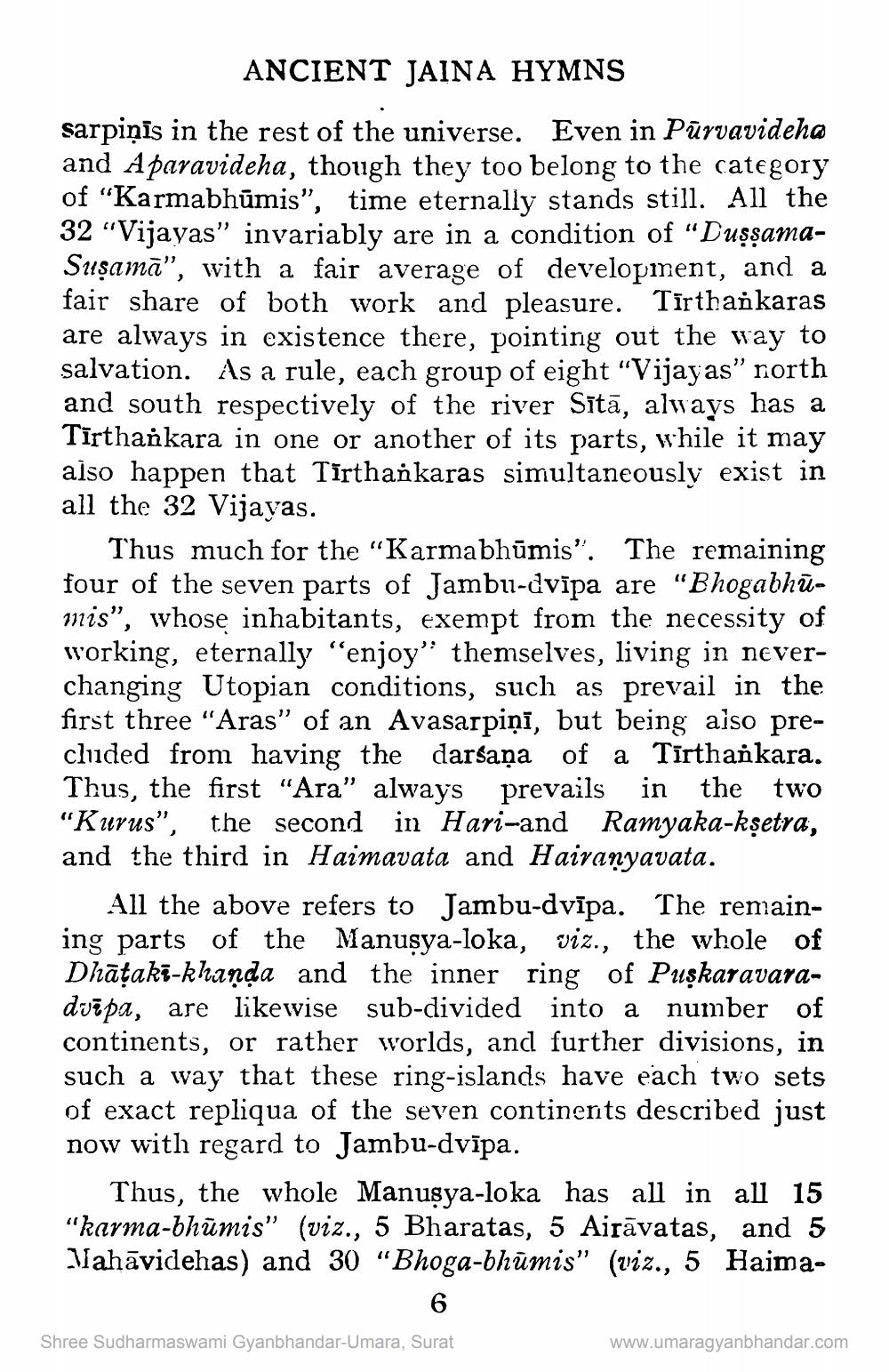________________
ANCIENT JAINA HYMNS sarpiņīs in the rest of the universe. Even in Pūrvavideha and Aparavideha, though they too belong to the category of "Karmabhūmis”, time eternally stands still. All the 32 “Vijayas" invariably are in a condition of "DuşşamaSuşamā”, with a fair average of development, and a fair share of both work and pleasure. Tīrthankaras are always in existence there, pointing out the way to salvation. As a rule, each group of eight "Vijayas” north and south respectively of the river Sītā, always has a Tīrthankara in one or another of its parts, while it may also happen that Tīrthankaras simultaneously exist in all the 32 Vijayas.
Thus much for the “Karmabhūmis". The remaining four of the seven parts of Jambu-dvīpa are “Bhogabhūmnis”, whose inhabitants, exempt from the necessity of working, eternally "enjoy" themselves, living in neverchanging Utopian conditions, such as prevail in the first three "Aras" of an Avasarpiņi, but being also precluded from having the darsana of a Tirthankara. Thus, the first “Ara” always prevails in the two "Kurus", the second in Hari-and Ramyaka-kşetra, and the third in Haimavata and Hairanyavata.
All the above refers to Jambu-dvīpa. The remaining parts of the Manusya-loka, viz., the whole of Dhāțaki-khanda and the inner ring of Puşkaravaradvipa, are likewise sub-divided into a number of continents, or rather worlds, and further divisions, in such a way that these ring-islands have each two sets of exact repliqua of the seven continents described just now with regard to Jambu-dvīpa.
Thus, the whole Manusya-loka has all in all 15 "karma-bhūmis" (viz., 5 Bharatas, 5 Airāvatas, and 5 Vahāvidehas) and 30 “Bhoga-bhūmis" (viz., 5 Haima
6
Shree Sudharmaswami Gyanbhandar-Umara, Surat
www.umaragyanbhandar.com




